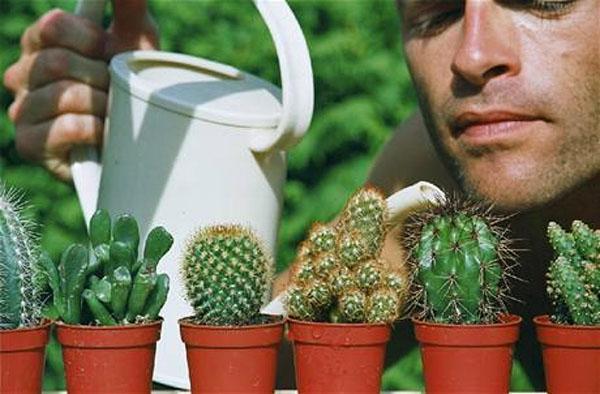Secrets of caring for cacti to bloom
 Opinions differ on the decorativeness of cacti among flower growers. Some believe that thorny sticks have nothing attractive, while others insist that these plants can have very original forms. However, there is one factor that reconciles both sides - when flowering occurs, this very stick, whether with or without thorns, is miraculously transformed. Large inflorescences of the most varied colors and structures give cactus much desired beauty and charm.
Opinions differ on the decorativeness of cacti among flower growers. Some believe that thorny sticks have nothing attractive, while others insist that these plants can have very original forms. However, there is one factor that reconciles both sides - when flowering occurs, this very stick, whether with or without thorns, is miraculously transformed. Large inflorescences of the most varied colors and structures give cactus much desired beauty and charm.
True, not everyone succeeds in waiting for the buds to appear on the cactus. And the reason for this, first of all, is too zealous care for him. Overprotection can also be dangerous, especially for succulents.
Therefore, in order for cacti to bloom, you need to properly care for them, observing five simple rules:
- permanent place;
- bright lighting;
- good soil;
- rare watering;
- correct wintering.
The role of lighting for flowering
In nature, cacti grow under the sun, so it is important to provide them with the same conditions in home cultivation. To do this, the pots must be placed in the brightest place in the house. Only with enough light will the plants lay buds and bloom profusely.
You cannot rearrange the flowerpots and turn them. In indoor conditions, there is not as much light as in nature. The cactus should receive maximum light from at least one side.
Soil requirements
The substrate for cacti should be light, crumbly and water permeable. In addition, the more often the plants are transplanted, the better they feel and the more abundant they bloom.
Watering features
About watering cacti can be said by the saying "rarely, but aptly." You cannot fill them, since these plants accumulate a lot of moisture in their fleshy shoots. In constantly moist soil, they will quickly rot, so you should rarely water the flowers, but abundantly. Saturated with moisture, the cactus will stand for a long time without feeling the need for it. The earth itself dries out within 3-4 days, but within two more weeks the flower has enough moisture accumulated by it.
Need for rest
All indoor plants experience a lack of lighting in winter, but this is especially important for cacti. At this time, without light, they stop growing and go into hibernation. Growth processes are restored in spring and then the rested and rejuvenated cacti will delight with flowering.
During the dormant period, cacti are watered even less often.